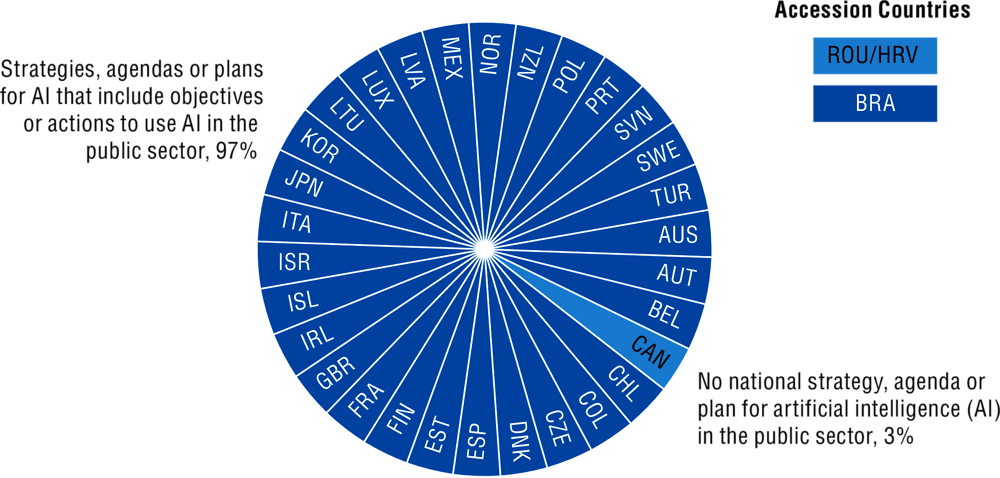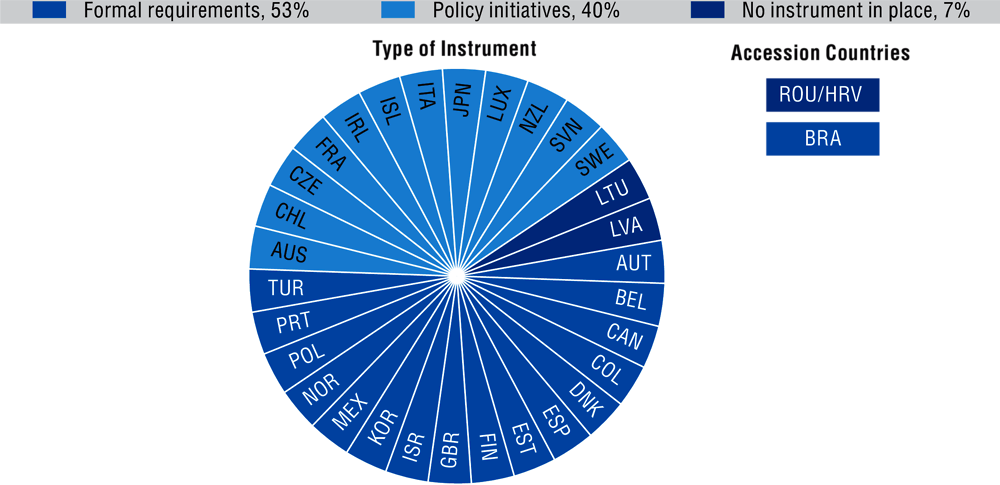Proactive governments anticipate people’s needs and respond to them rapidly, increasing accessibility and satisfaction with public services and reducing administrative burdens. The strategic and ethical adoption of artificial intelligence (AI), such as that promoted by the OECD AI Principles and the OECD Recommendation of the Council on Artificial Intelligence, can help governments achieve this vision.
OECD countries are improving the governance and use of AI in the public sector to deliver proactive public services and improve processes. Most countries with data available (29 out of 30, or 97%) have strategies, agendas or plans for AI that include objectives or actions for its use in the public sector (Figure 9.4).
Alignment and adherence to shared ethical values and principles for the management of algorithms are essential when using AI in the public sector. Building on the OECD AI Principles, the Survey on Digital Government found significant differences in the approaches countries used to ensure the ethical management and use of algorithms by public sector institutions. While 16 out of 30 (53%) countries rely on formal requirements (e.g. laws or regulations) for this purpose, 12 (40%) use policy initiatives such as guidelines, standards or principles. Two (7%) of the surveyed countries did not use any instruments (Figure 9.5).
Implementation and use of AI in the public sector also vary across countries. Twenty-three of the 30 countries surveyed (77%) reported using AI in at least one of three evaluated categories: public sector internal processes, public services design and delivery, and policy making. Looking specifically at each category, 22 out of 30 countries (73%) used AI to improve internal public sector processes. Canada uses robotic process automation to streamline internal processes and make officers’ workflows more efficient, for example. The same number had developed AI projects for public service design and delivery. For instance, Finland’s AuroraAI recommends public services to end users based on their attributes. In contrast, only a small number of countries (11 out of 30, or 37%) have applied AI to improve policy making, such as Estonia’s semi-automatic remote sensing information system for geo-referencing forest resources and improving environmental decision-making capabilities. Only ten countries (33%) are using AI across all three categories while seven (23%) have not developed AI projects in any of the three categories (Figure 9.6).



